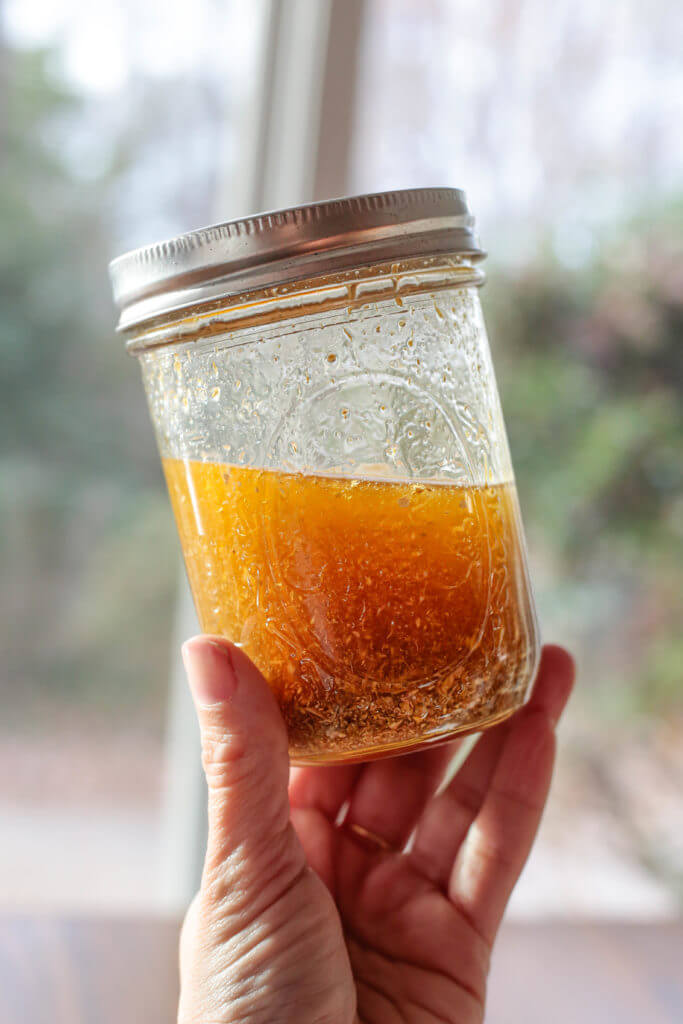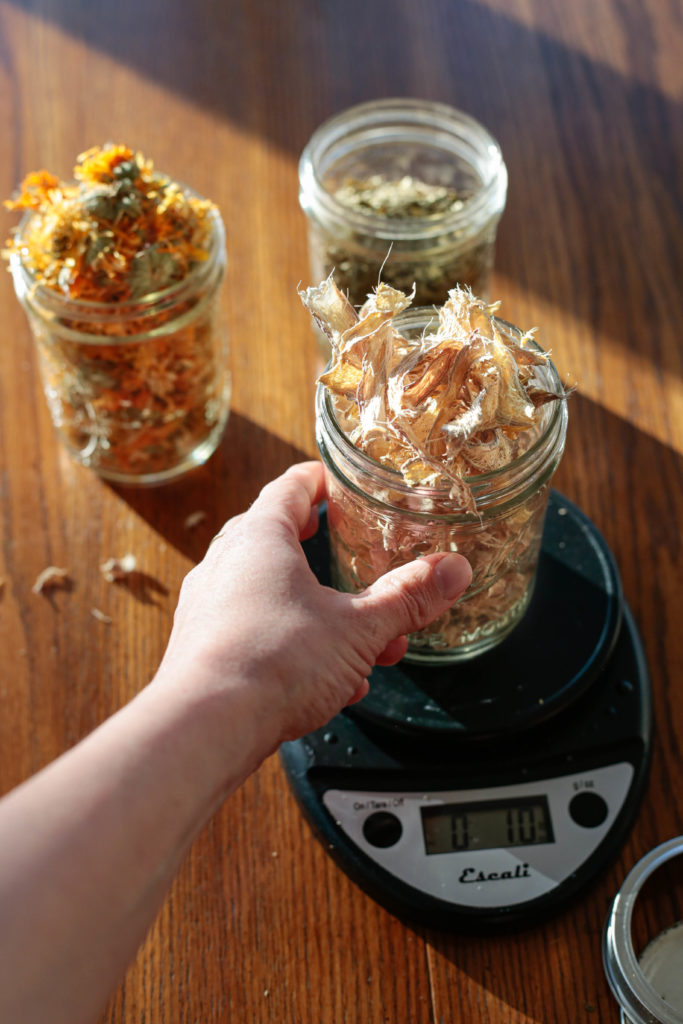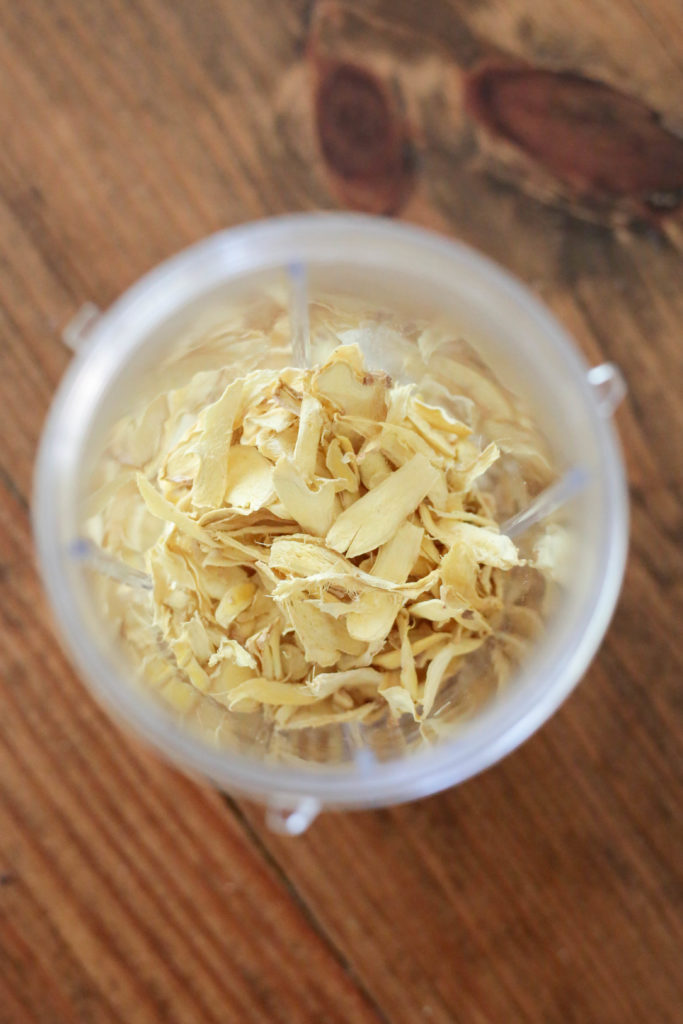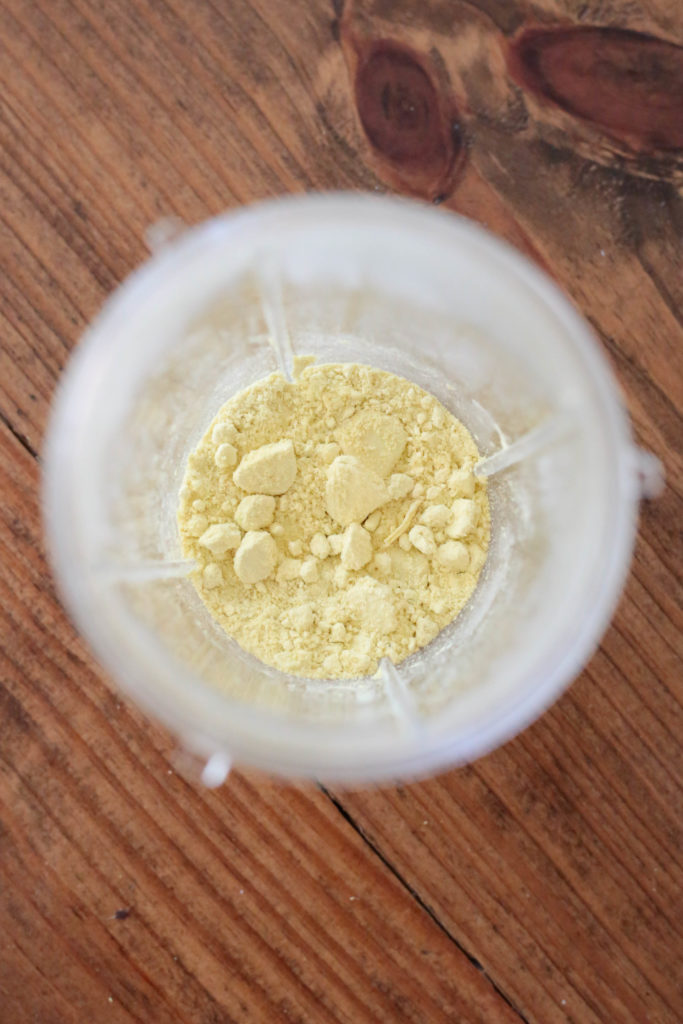
If thoughts of coziness and warmth sound good to you right now… you’ll love this ginger infused oil recipe.
It’s simple, but it really packs a punch! And that’s because we’re working with ginger. This is not a shy herb – its stimulating, its warming, its pungent – and when you massage ginger oil over your body, you’ll know its there!
You can use ginger infused oil directly on your skin. It is a hot/warm herb (and super potent when you dry it from fresh) so make sure that your skin can tolerate it before slathering it on.
But don’t be afraid to use it. Ginger infused oil is very restorative, and used to treat inflammation – even eczema and acne. If you need to, you can always “dilute it” with other oils…
What is Ginger Infused Oil used for?
Ginger infused oil is a great herbal remedy to have at home – not only for warming up cold limbs in the Wintertime, but for easing menstrual cramps, nausea, inflammation, arthritic pain and body aches. It will keep for 6 months, so once you make it, you’ll have it to use over and over again!
Warming cold limbs:
Ginger is warming because it stimulates circulation, and brings blood to the extremities and skin.
Ginger has a quality of warmth that spreads throughout the entire body. (source)
People with a cold body constitution, regardless of the season, benefit from the warmth of ginger.
It’s also good for conditions related to poor circulation like varicose veins and cellulite.
If you get cold feet at night, massage ginger oil before going to bed.
You can also increase the sensation of heat in your bath, by adding ginger to the water. (source)
And – the somatic experience of warmth, is very calming.
In a single-blind study, people reported feeling significant changes towards relaxation, emotional balance, deep and slow breathing as well as warm hands and feet after using a ginger compress on the chest.
Nausea:
Researches found in a study that applying a solution of 5% ginger essential oil in grape seed oil nasal-cutaneously oil prevented postoperative nausea (source)
You might try applying ginger infused oil over your chest, and around your nose.
And if it doesn’t help, you can add in ginger essential oil to boost the blend and get closer to the trial results.
Pain Relieving:
Ginger has pain reducing effect, and can be used topically to relieve body pain.
Clinical studies have found topical use of ginger to be effective for muscle soreness, osteoarthritis, lower back pain and migraines. (source)
If you’re using ginger infused oil for therapeutic treatment, it’s a good idea to also consume ginger as tea and in your food, to bolster the benefits.
The process of making ginger infused oil




GINGER INFUSED OIL RECIPE
Ingredients:
- 1 ounce (weight) of dried ginger, powdered
- 7 ounces (volume) of plant oil (jojoba, sunflower, safflower…)
Drying the Ginger:
- If you’re going to make the effort of dehydrating ginger, make lots.
- You can store it in a jar, use it to make tea. Grind it into a powder to use in cooking… its so nice to have freshly dried ginger in the pantry
- I peel my ginger. Out of habit, but I’m trying to quit. It’s laborious, so it’s up to you. I use a spoon to peel off the skin.
- Slice the ginger evenly, and nice and thin, so that it dehydrates faster.
- Oven or dehydrator? Use what you have, but I will say the dehydrator is my top favorite kitchen tool!
- Dehydrator: 120 F – roughly 4 hours
- Oven: lowest setting, leave the door cracked open. Keep an eye on it!
Making the Infusion:
- Once the ginger is dry, blend it into a powder.
- Why powder it? It will make a more potent oil, breaking down the plant cell walls to release the constituents.
- Weigh out 1 ounce of ginger powder, by weight.
- If you make herbal recipes, its a good idea to get a weighing scale. This one is $10
- Pour the ginger powder into a jar. And then fill the jar with 7 ounces (by volume) of oil.
- Blend well and cover with the lid.
Warmth helps the infusion process.
- And cuts down the infusion time, drastically!
- I use my boxed dehydrator for making oil infusions – its the best!
- This is the one I have.
- Take out the trays, and place the jar right into the dehydrator.
- Set it at 120 F for 3 consecutive days.
- Shake the jar twice per day.
- Or, place the jar in a dark but warm spot in the house, and let it infuse for 6 weeks. Shake it as often as you can remember.
Decanting the Oil:
- Strain out the oil, using a very fine mesh strainer.
- I like this one.
- Store the oil in a glass bottle.
- Label and keep away from sunlight.
- Use within 6 months.
Why do we measure in weight and volume? Herbs are measured by weight, because they vary in density. Some herbs are big and fluffly. Some herbs are small and compact. To get an equal amount of both, we need to weigh it. Whereas oil is measured, and sold, by volume.
When you make an herbal infusion and measure out your ingredients – the standard ratio of herb to oil is 1:7 (weight to volume). It makes a strong infusion, and potent, therapeutic oil.

What’s the best oil to use for infusions?
I recommend using supermarket oil like sunflower or safflower oil, almond, grapeseed and rice bran oil. I don’t love using olive oil, simply because it has a olive aroma.
- Choose unrefined, cold-pressed, or very lightly processed like expeller pressed
(heat degrades the nutritional value, but you are infusing herbs and nutrients back into the oil… so I think it’s okay) - This is the type of oil that I often see in supermarketsand use for skin care: Spectrum Organics
- If you use an edible oil, that means you can also use your ginger oil infusion in your food too! It’s seriously delicious.
For herbal infusions, I like to use supermarket oils because they’re more accessible and less expensive than specialty skincare oils. If you go to a food store, like Whole Foods, take note of the price of grape-seed oil in the food aisle, and the grape-seed oil in the skincare aisle. There’s a big price difference! But, for your skin, they’re both the same. The difference is that oil for food goes through different regulations to be food-safe.
Just to recap…
Ginger oil is good for:
Circulation and flow, when you feel stiff and heavy in your body.
Easing menstrual crampsRelieving joint aches and body tension
Warming cold limbs
Bringing energy to a tired body
I also love ginger oil because it’s grounding, calming and just really cozy!
Happy infusing! x

2 responses to “Deep Warmth: Ginger Infused Body Oil”
Thank you so much for this recipe. I made it and it’s amazingly beautiful and so warming. ❣️
Thank you for the recipe, I just make the ginger oil but in little pieces, so is not so strong, I will follow your instructions next time. Thank you. I use it for my hair together with calendula oil hopping that stop my hair falling. I love your recipe Thank you